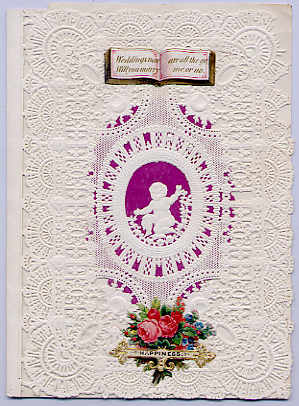- Town card shop closing after 21 years
- Owner blames increasing cost of rent
- John Hornsley has been selling greetings cards in the Island for 30 years
- Do you buy most of your cards online or from shops? Take part in our poll
- When was the first greetings card sent? Read our brief history below
TOWN retailer John Hornsey is shutting up shop tomorrow – blaming high rents and the cost of doing business in Jersey for his reason to retire after 30 years selling greetings cards.
Mr Hornsey co-owns Just Right at 17 Beresford Street with Michael Buesnel and they employ two members of staff who have yet to find new jobs.
He said they had looked at leasing new premises close by but were put off by the amount of rent they would have to pay.
‘The lease was up, the building had been up for sale for five years and had recently been sold,’ Mr Hornsey said.
‘We were given the choice of extending the lease to September but we took the opportunity of getting out of the business because of the cost of rent, which is about £800 a week.
‘It’s a lot of money to find and that’s before you put the light on.
‘And it’s a lot of money to find before you find the money to pay for the rest of the items.
‘There’s the shop stock, staff, electricity and Social Security. It just goes on.’
The business began at markets held at St Peter and Les Quennevais in 1985 but grew as they first opened a card shop in Bond Street and then at the current address.
However, the first store closed under similar circumstances after 25 years when the lease was up and the owners had other plans for it.
Mr Hornsey said tomorrow will be a sad day after 21 years in Beresford Street.
‘We’ll be sorry because we have made a lot of friends over the years,’ he said.
‘I started at the St Peter’s market and I am still serving the same people 30 years on and now I am serving members of their families.
‘Our customers are sorry to see us go, they are coming in to say goodbye and saying they don’t want to see us go but we have no choice really.
‘We did look at another shop around the corner but the cost of taking the lease over was not viable as they were talking silly money.
‘We have had a good run at it but it was better in the early days.’
- The custom of sending greeting cards can be traced back to the ancient Chinese, who exchanged messages of good will to celebrate the New Year, and to the early Egyptians, who conveyed their greetings on papyrus scrolls.

- By the early 1400s, handmade paper greeting cards were being exchanged in Europe. The Germans are known to have printed New Years greetings from woodcuts as early as 1400, and handmade paper Valentines were being exchanged in various parts of Europe in the early to mid-1400s.
- By the 1850s, the greeting card had been transformed from a relatively expensive, handmade and hand-delivered gift to a popular and affordable means of personal communication, due largely to advances in printing and mechanization, as well as the 1840 introduction of the postage stamp.
- The first known published Christmas card appeared in London in 1843, when Sir Henry Cole hired artist John Calcott Horsley to design a holiday card that he could send to his friends and acquaintances.
- Although the first known valentine card can be traced back to 1415, it wasnt until the early 1800s and the Penny Post that they became popular and affordable. Esther Howland, a young woman from Massachusetts, was the first regular publisher of valentines in the United States. She sold her first handmade valentine in 1849, eventually establishing a successful publishing firm specializing in the elaborately decorated cards.
- Louis Prang, a German immigrant who started a small lithographic business near Boston in 1856, is generally credited with the start of the greeting card industry in America. Within ten years of founding his firm, he had perfected the color lithographic process to a point where his reproductions of great paintings surpassed those of other graphic arts craftsmen in both the U.S. and Great Britain. In the early 1870s, Prang began publishing deluxe editions of Christmas cards, which found a ready market in England. In 1875






